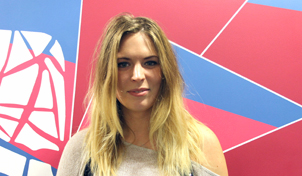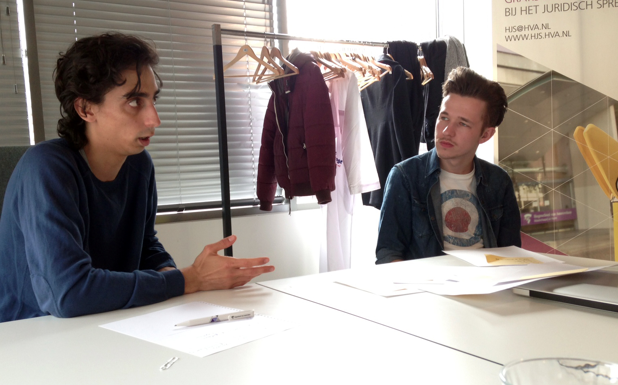Short bio
Gabriel Colombo holds a Master degree in Communication Design from Politecnico di Milano. He has a lot of experience in designing visual tools to facilitate academic and market research projects and likes to focus on data visualization, infographics and visual storytelling.
Gabriel has worked at “The Visual Agency”, an Italian agency that a focus on infographics. Therewith, he also often collaborates as a visual d esigner with the Digital Methods Initiative. He is ‘a big fan of excel files, old maps and typographic ligatures’(MediaLAB 2014).
The right data is captured, what’s next?
“You start trying to find out which types of visualization works and which don’t. You can simply do this is in Adobe Illustrator by using the basic charts from the Graph Tool. If you see directly that the shape doesn’t show differentiations within the data, you’ll have to come up with a solution or another type of graph”. Gabriel notes that it helps to write the problems down you stumble on, so you can adjust them at another moment. According Gabriel, it is also important to skip working on the aesthetic parts during the first phase; “You only want to know what works and what doesn’t. Coloring things and making labels look pretty is a real waste of time when you are not going to use the graph later on”. For this first phase of visualization, Gabriel refers to a couple of tools you can use:
– Adobe Illustrator: Illustrator contains a graph tool. Within this tool you can easily import data from datasets and export it in multiple available types of graphs. Next to this you can easily manipulate the graphs. Though, there is a disadvantage of this tool is. When you start manipulating the graph by for example scaling, you are no longer able to change the data.
– RAW: RAW is a free online tool which enables to test your dataset in a visualization in just a minute. When you import the data (just by copy-pasting from excel) you can easily connect variables to axes, labels, etc. by drag and dropping. When you are happy with the result, you can export it and tweak it in Illustrator.
– Plotly: Plotly contains the same ease of use as RAW but also creates the option to make you’re visualization interactive. You can easily embed it or even tweak the output in API’s for Python, Arduino and other code languages.
What do you do if you find out that there’s too much data to show?
“When a graph becomes too chaotic caused by the amount of data, you can try to find a way to aggregate certain data. In this way the information that has to be shown remains clear and patterns or interesting peaks are still visible”. This also contains a negative side-effect. Applying this rule also hides possible smaller problems. It needs a really critical reflection.
Do you have some tips about using labels, colours, etc.?
“You are lucky you have to make interactive visualizations because you can hide, show and sort information that is less essential in the default state of the visualization”.
A way to design interactive visualizations in a static tool is possible when you make use of multiple artboards and look how the different states would look like. For example when you click on a certain element, the second artboard has to show detailed data about it.
What do you have to say about the right way of using colours?
“It’s important to look at the data ranges of your data set. If you have a variable with a minimum and a maximum you can pick two colours, the hues between those two colours will show the values of the data in between. Watch out with gradients, if you don’t have to use it to show values leave this out of the visualization”.
Gabriel gives the tip; when using many categories you can use ‘random’ colours which will show the differentiations. For example, use different colours on a map to separate different countries from each other.
Do you have any experience with combining different kind of charts?
“You have to be careful with it, combining different charts can create a chaotic visualization. In your case it is better to use multiple graphs, then combine them all in one visualization. The use of interactivity gives you a lot of possibilities to make a good overview of the data you want to show. Combining charts will make it also difficult for the programmers.”
In our certain situation, we work with programmers whom not have a lot of experience with D3. Likely, they have to depend heavily on existing visuals models and code and tweak those.
How do you test your visualization?
“Print your work and write down the problems you come up with, let your environment give feedback. Make a paper prototype can be a way to test it with your users. Take the time to come up with the right questions you want to ask. By creating a kind of user scene that will represent a real situation you know your work provides enough information. You have to ask yourself ‘What is the problem of the user?’ and ‘Will the visualization give an answer to this question?”.








